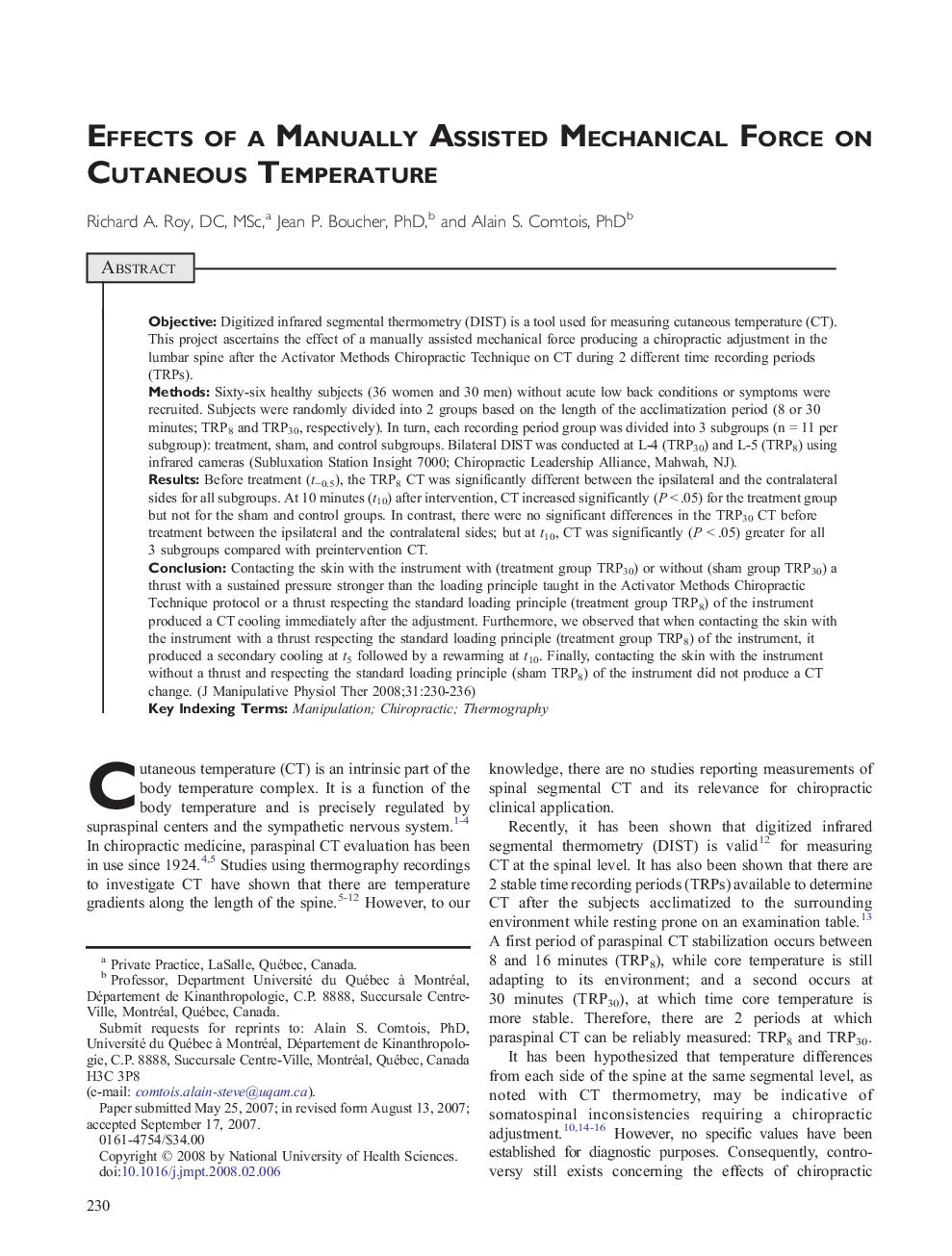| کد مقاله | کد نشریه | سال انتشار | مقاله انگلیسی | نسخه تمام متن |
|---|---|---|---|---|
| 2621718 | 1135710 | 2008 | 7 صفحه PDF | دانلود رایگان |

ObjectiveDigitized infrared segmental thermometry (DIST) is a tool used for measuring cutaneous temperature (CT). This project ascertains the effect of a manually assisted mechanical force producing a chiropractic adjustment in the lumbar spine after the Activator Methods Chiropractic Technique on CT during 2 different time recording periods (TRPs).MethodsSixty-six healthy subjects (36 women and 30 men) without acute low back conditions or symptoms were recruited. Subjects were randomly divided into 2 groups based on the length of the acclimatization period (8 or 30 minutes; TRP8 and TRP30, respectively). In turn, each recording period group was divided into 3 subgroups (n = 11 per subgroup): treatment, sham, and control subgroups. Bilateral DIST was conducted at L-4 (TRP30) and L-5 (TRP8) using infrared cameras (Subluxation Station Insight 7000; Chiropractic Leadership Alliance, Mahwah, NJ).ResultsBefore treatment (t−0.5), the TRP8 CT was significantly different between the ipsilateral and the contralateral sides for all subgroups. At 10 minutes (t10) after intervention, CT increased significantly (P < .05) for the treatment group but not for the sham and control groups. In contrast, there were no significant differences in the TRP30 CT before treatment between the ipsilateral and the contralateral sides; but at t10, CT was significantly (P < .05) greater for all 3 subgroups compared with preintervention CT.ConclusionContacting the skin with the instrument with (treatment group TRP30) or without (sham group TRP30) a thrust with a sustained pressure stronger than the loading principle taught in the Activator Methods Chiropractic Technique protocol or a thrust respecting the standard loading principle (treatment group TRP8) of the instrument produced a CT cooling immediately after the adjustment. Furthermore, we observed that when contacting the skin with the instrument with a thrust respecting the standard loading principle (treatment group TRP8) of the instrument, it produced a secondary cooling at t5 followed by a rewarming at t10. Finally, contacting the skin with the instrument without a thrust and respecting the standard loading principle (sham TRP8) of the instrument did not produce a CT change.
Journal: Journal of Manipulative and Physiological Therapeutics - Volume 31, Issue 3, March 2008, Pages 230–236